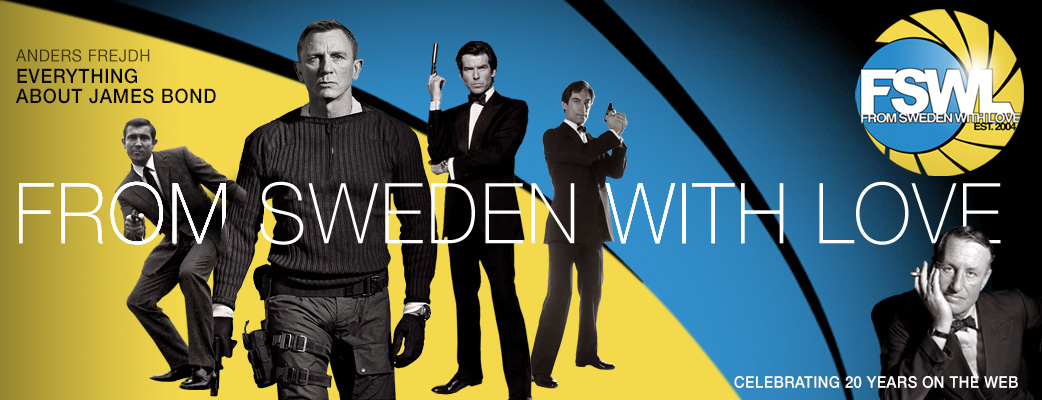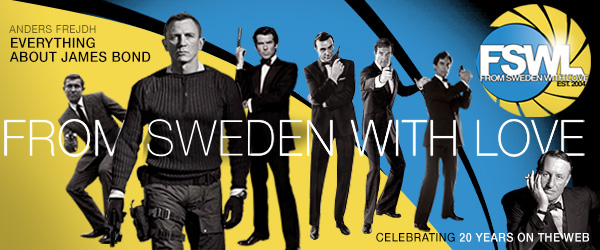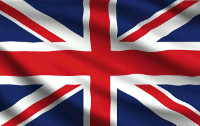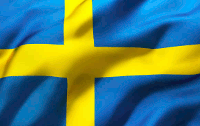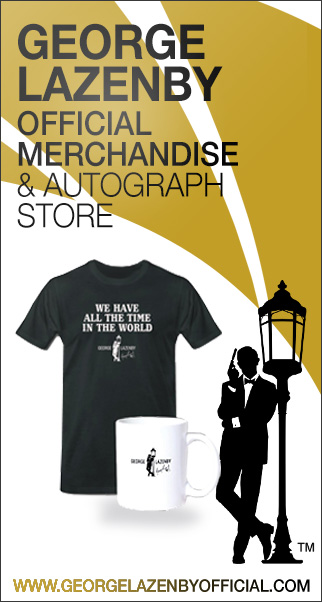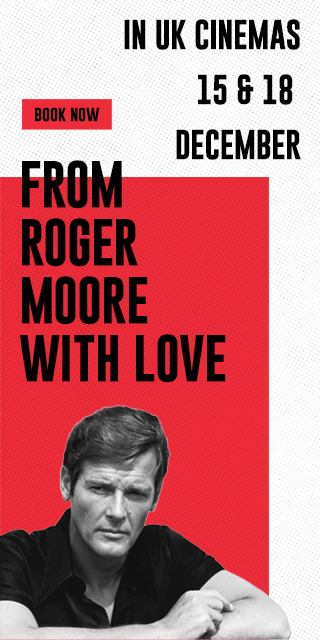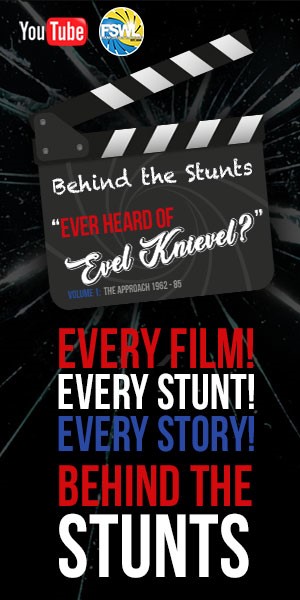Website last updated: 10-6-2025
Home
Book & Film reviews
Competitions
Event
FSWL Merchandise
Interviews
James Bond 007 articles
James Bond 007 collection
James Bond 007 films
James Bond 007 games
James Bond 007 literature
James Bond 007 news
James Bond 007 products
James Bond 007 shop
James Bond 007 stars
James Bond Fan Clubs
Swedes in the Bond films
In Memoriam of Special Effects Maestro Derek Meddings
By: Anders Frejdh
Published:
2004-09-06
2004-09-06
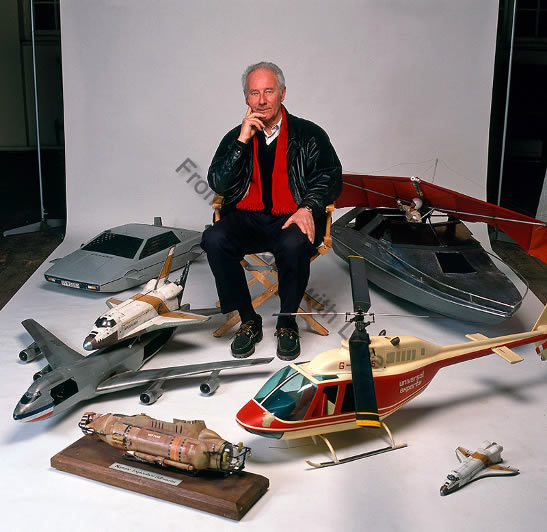
Obituary: (from The Independent)
The work of Derek Meddings thrilled millions of moviegoers, yet only a small percentage could actually name the man responsible for the special effects of the James Bond films of the 1970s and Hollywood blockbusters like Superman (1978). Within the industry, the reverse was true: American film-makers came to Pinewood Studios because of the international reputation of British technicians, and Meddings was one of the best.
His father had been a carpenter at Denham Studios and his mother variously Merle Oberon's stand-in and Alex Korda's secretary, but it was not until the late 1940s that Derek was able to use his art school training to get a job there, lettering credit titles. The first break came when he met the special effects man Les Bowie on a commercial, and joined his matte painting department.
During the Fifties Bowie and his new recruit created Transylvanian landscapes for Hammer Films, where limited budgets necessitated a "string and cardboard" invention that proved useful when Meddings was hired for Gerry Anderson's earliest television puppet shows. From painting cut-out backgrounds of ranch houses and picket fences on Four Feather Falls (a western format), Meddings moved on to design the models for Stingray (1964-1965) with Reg Hill, and was then given a free hand on what has since become a cult series, Thunderbirds (1965-1966).
Drawing on the lessons in ingenuity from his years with Ron Bowie, he applied simple logic to the problem of tracking alongside the futuristic vehicles on take-off and landing; camera and Thunderbird remained stationary, while the background of trees and runway moved backwards on a continuous belt which rotated under the miniature set, on the same principle as an escalator. In 1966 Anderson and Meddings hit the big screen with the full-length cinema feature Thunderbirds are GO, and then made the crossover to adult, live action, science fiction with Doppelg├żnger (1969, aka Journey to the Far Side of the Sun) about a rogue planet that was a mirror of the earth. Meddings worked again with Anderson on Captain Scarlet (1967-1968) and UFO (1970, another live action venture) until he impressed Albert R. Broccoli with some miniature effects done for Live and Let Die (1973), which launched Roger Moore as James Bond.
Once Broccoli realised the economic advantages of building detailed models instead of expensive full-size constructions, Meddings was encouraged to come up with ideas on the next Bond, The Man with the Golden Gun (1974). However, he was not entirely finished with "string and cardboard" - or, at least, wire and fibreglass. In 1975 John Dark and Kevin Connor decided that their prehistoric adventure The Land That Time Forgot could do without the stop-frame animation and matte superimpositions of Hammer's One Million Years BC - instead they would build prop monsters that could be photographed in the same frame as the actors. It was not Meddings's fault that a low budget meant that the pterodactyls' wings never moved in flight.
He was on safer ground the following year with Aces High. For this First World War aviation drama there was no model work. Authentic fighters and bombers of the period were restored to flying trim by the specialists Doug and Tony Bianchi, and Meddings's principal job was to rig the planes for the combat sequences.
On the release of Aces High, I compiled a programme in Granada television's series Clapperboard about the making of the film, and Meddings was one of our interviewees. Like most backroom professionals in the film business he was modest, quietly spoken, matter-of-fact, and took pleasure in explaining his craft; how the stab of gunfire was simulated by the flashing of a strobe light in the muzzle of a biplane's machine-gun, and how a canister placed discreetly between the underside of a wing and the fuselage would be detonated by the pilot, to leave a dramatic smoke trail as the aircraft spiralled out of a dogfight. Meddings became a friend of Clapperboard, and came back on several occasions to demonstrate the tricks of his trade.
He returned to the world of James Bond for The Spy Who Loved Me (1977), and came to admire the production designer, Ken Adam, greatly. Adam had the luxury of working on the 007 Stage at Pinewood, which had been purpose-built to accommodate his design for the interior of a supertanker; but Meddings probably had more fun, because he got to spend four months on location in the Bahamas, where he supervised the design and construction of a miniature supertanker for exterior sequences. "Miniature" is a comparative term, since the oil tanker was over 60 feet in length; it had to be of a scale to gobble up three equally authentic-looking nuclear submarines and - being filmed on the real ocean - would have to achieve a convincing amount of water displacement.
Meddings's other masterpiece of special effects on The Spy Who Loved Me was the Lotus Esprit which converted into a submersible. For this he cleverly intercut full-size body shells with one-quarter scale miniatures. On screen, nobody could see the join and Meddings won a Grand Prix award from UNIATED for his work on the movie - incidentally, carried out in shark infested waters.
Riding high, Meddings was persuaded to create the all-important models shots for Superman. Pinewood was again the main venue, and one of the principal sequences filmed there was the destruction of the Golden Gate Bridge, in San Francisco, in an earthquake. For increased realism, Meddings opted to shoot on the backlot against a genuine sky rather than inside a stage against a blue screen. A 60 feet span of bridge was constructed, over which the actor Christopher Reeve was suspended by wires, and a miniature school bus and several automobiles were made to collide as Superman dived to the rescue. The ice planet of Krypton, a crazy jigsaw of plaster and fibreglass, was built on F Stage. Its disintegration was filmed with a camera mounted on a special arm, the LOUMA, that could tack along the 20 feet deep gullies of the collapsing set. Having made audiences believe that a man could fly, Meddings received an Oscar®.
For the next Bond epic, Moonraker (1979) (1979), Meddings returned to first principles. Using a technique almost as old as the cinematograph itself, he did all the optical effects for the climactic battle "in the camera"; a process of winding back the film and exposing it again and again, until the required composite image of astronauts, space station and escape pods was obtained.
Ever versatile, Meddings designed the bizarre weapons employed in the sword and sorcery adventure Krull (1983), as well as directing 2nd unit action in Italy, before lending his talents to Neil Jordan's supernatural comedy High Spirits (1988). When the director Tim Burton visited Meddings at the Irish location to discuss working on Batman (1989), it was not only his track record with 007 and Superman that counted - it emerged that Burton was a fan of Thunderbirds, and Meddings reckoned that was really why he got the job.
The resulting collaboration was another feather in the cap of the Magic Camera Company, the comprehensive visual effects facility that Meddings had established at Lee International Studios in Shepperton. From this base of operations, Meddings also supplied the necessary expertise to Supergirl (1984) and Santa Claus (1985); while for the internationally cast production The Never Ending Story II (1990), a tale of magic and dragons, he set up an outfit in Germany.
At the time of his death, Derek Meddings was engaged in post-production on the new James Bond picture, GoldenEye (1995), on which his sons Mark and Elliott also worked.
Derek Meddings married twice and has six children.
Editor's note:
In 2000, a special exhibition titled Bond och Beyond: The Movie Magic of Derek Meddings was set up to celebrate Meddings contribution to the film industry. In October 2008, Shubrook Brothers published a book about his work, Special Effects Superman: The Miniature Effects of Derek Meddings.
Read more about Derek Meddings' life and caerer on Wikipedia:
en.wikipedia.org/wiki/Derek_Meddings
Tags:
#in_memoriam
#news
Tweet
